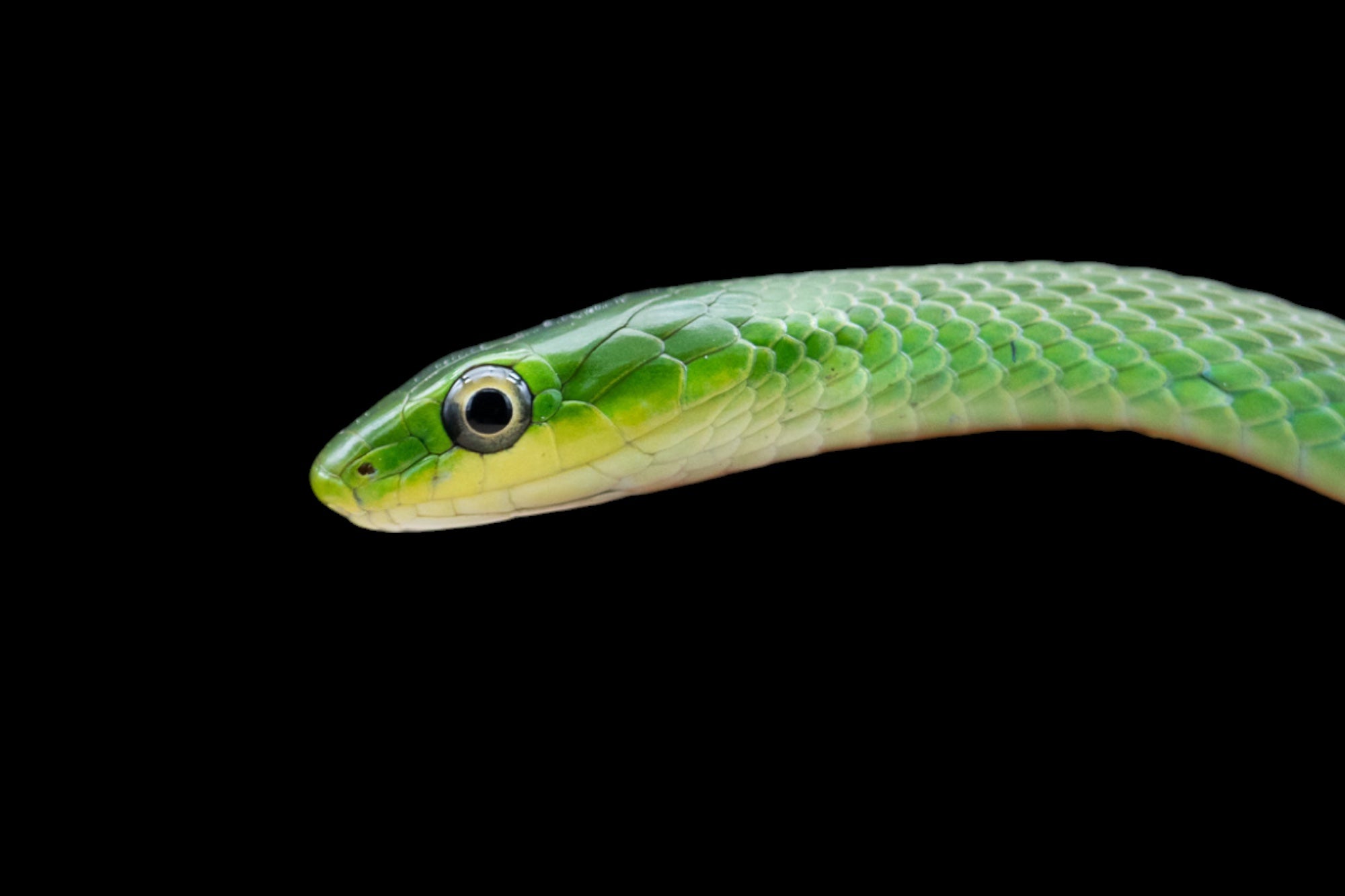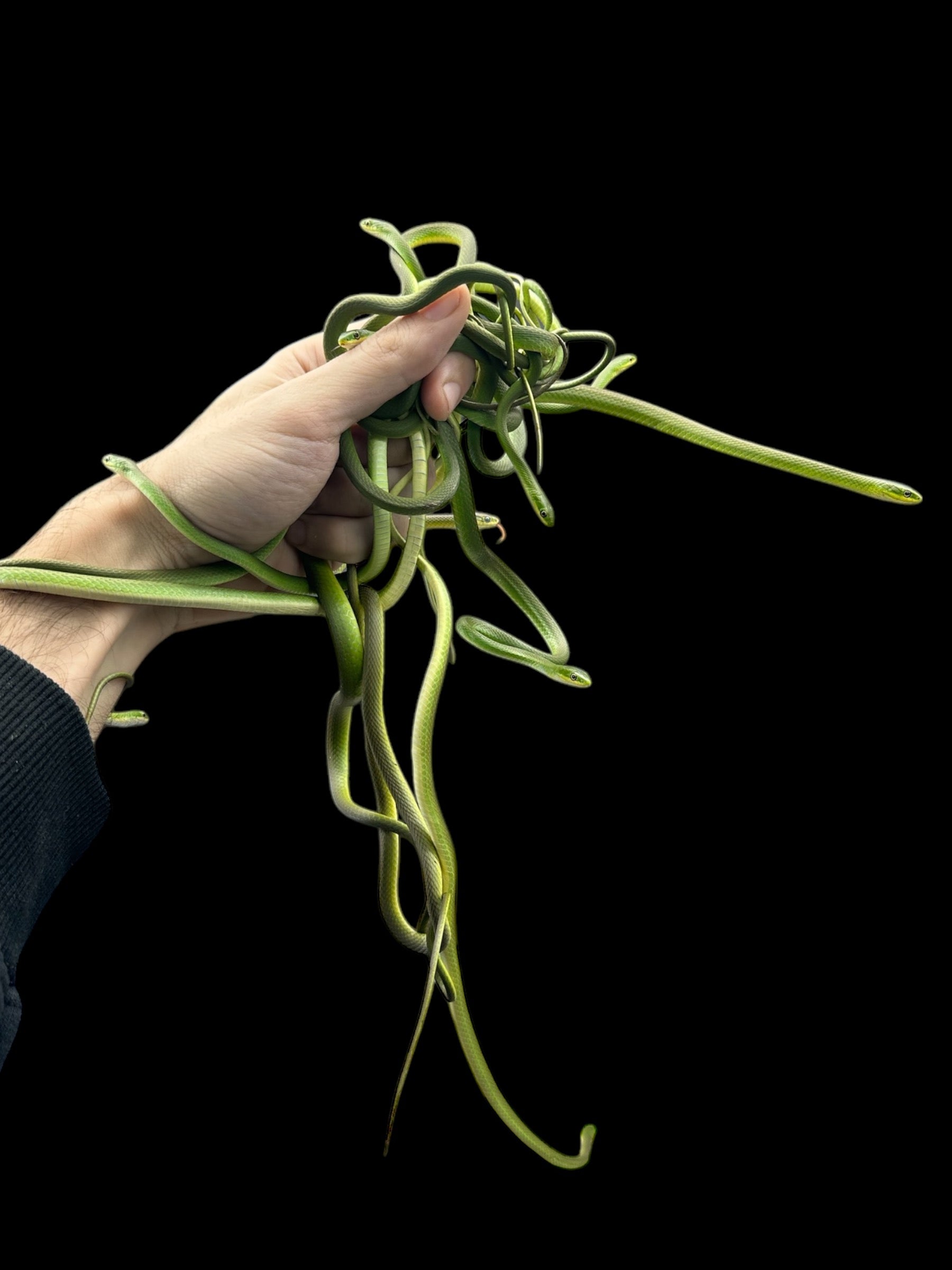Photo Disclaimer
Description
Rough Green Snake
Scientific Name: Opheodrys aestivus
Common Name: Rough Green Snake
Species Overview
Size: Adults typically reach 2–3 feet (0.6–0.9 m) in length, though some may approach 3.5 feet (1.1 m). They are slender, lightweight snakes with long, delicate tails and large, bright eyes.
Appearance: The Rough Green Snake is a vibrant, emerald-green arboreal species with a cream to yellowish belly. Its name comes from its keeled (ridged) scales, which give it a textured or “rough” appearance compared to the smooth-scaled Smooth Green Snake (Opheodrys vernalis). The vivid green colour provides excellent camouflage among leaves and vines, while its slim body and graceful movements give it a distinctive, almost vine-like appearance. In captivity, maintaining bright green tones requires proper lighting and minimal stress, as these snakes can dull to a bluish or olive hue if conditions are poor.
Distribution: Found throughout the southeastern United States, extending westward into Texas and north into the Mid-Atlantic region.
Habitat: Rough Green Snakes inhabit forest edges, shrubs, and riverbanks, favouring areas with dense vegetation and access to water. In captivity, they do best in large, vertically oriented enclosures that allow for climbing and exploration among branches and foliage.
Behaviour: These snakes are gentle, shy, and primarily diurnal. They are active hunters that rely on vision to catch small insects and other invertebrates. Rough Green Snakes are non-venomous and rarely bite, making them visually fascinating display animals, though they are best suited to observation rather than frequent handling due to their delicate nature.
Captive Care
Enclosure: Provide a vertically oriented enclosure of at least 3 feet tall × 18 inches wide × 18 inches deep for adults. Include abundant climbing branches, live or artificial plants, and a secure mesh or screen top to ensure airflow.
Temperature & Humidity: Maintain a daytime gradient of 78–86°F (25–30°C) with a gentle basking area near 88°F (31°C). Nighttime temperatures can drop to 70–74°F (21–23°C). Keep humidity between 50–70%, misting lightly once or twice daily.
Lighting: Full-spectrum UVB lighting is recommended to support natural activity and maintain colouration. A 12-hour light cycle helps simulate their natural environment.
Diet: Rough Green Snakes are primarily insectivorous. Offer a variety of appropriately sized prey such as crickets, roaches, silkworms, and the occasional small pinkie mouse. Dust insect prey with calcium and vitamin supplements as needed.
Behaviour in Captivity: Active and alert, Rough Green Snakes spend much of their time climbing and exploring. They are best viewed in well-planted display enclosures that replicate their natural environment.
Special Considerations: These snakes are delicate and stress easily with excessive handling. They require clean water, consistent humidity, and well-ventilated enclosures. Captive-bred specimens are strongly preferred, as wild-caught individuals often struggle to adapt and feed reliably.
Genetics Note
The Rough Green Snake (Opheodrys aestivus) has no recognized colour morphs or genetic variants in captivity. All individuals represent the natural wild-type form, though slight differences in tone or brightness may occur between regional populations.


